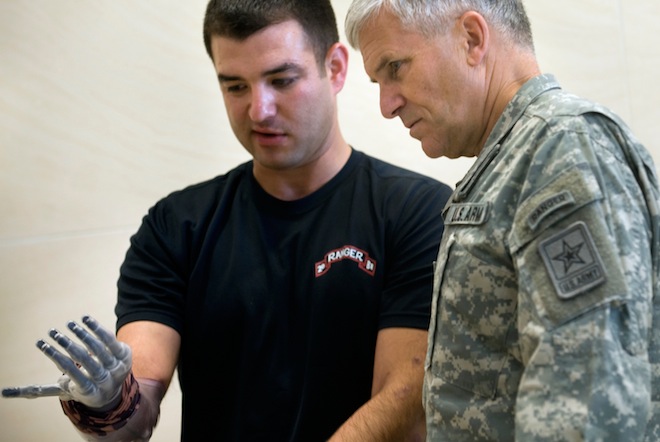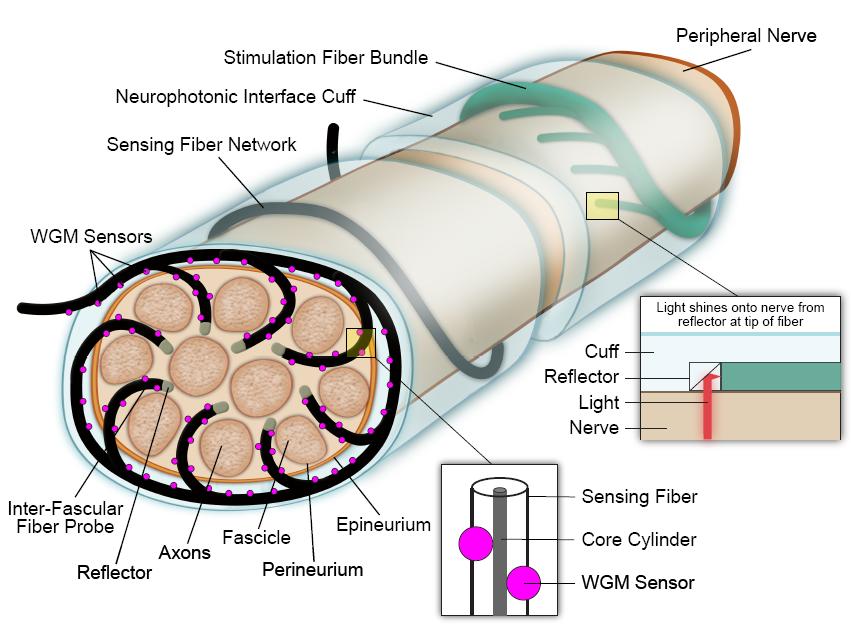Lasers power Pentagon’s next-gen artificial limbs
November 4, 2011
Brain-controlled prosthetic devices powered by lasers and fiber-optics have been developed by DARPA-funded researchers led by experts at Southern Methodist University, Wired Danger Room reports.
A fiber-optic prosthetic for a human patient would be affixed at one end to a prosthetic, and attached at the other to the body’s severed nerves. Those are a decade off, but already, researchers say they’ve nearly climbed the project’s biggest hurdle: developing sensors with enough sensitivity to detect and trigger the infinitesimally small perturbations of a single activated nerve.
The new micro-sensors developed for the project are compatible with the body’s tissues and small enough to fit hundreds onto a single optical fiber. One optical fiber can transmit a ton of signals at a single time and even stimulate a single neuron, making a bundle of them able to transmit exponentially more signals, much faster, with way more specificity than systems relying on electrodes.
Current brain-controlled prosthetic rely on metal implants, which aren’t compatible with the body’s tissues, and can only transmit a few signals at a time.

